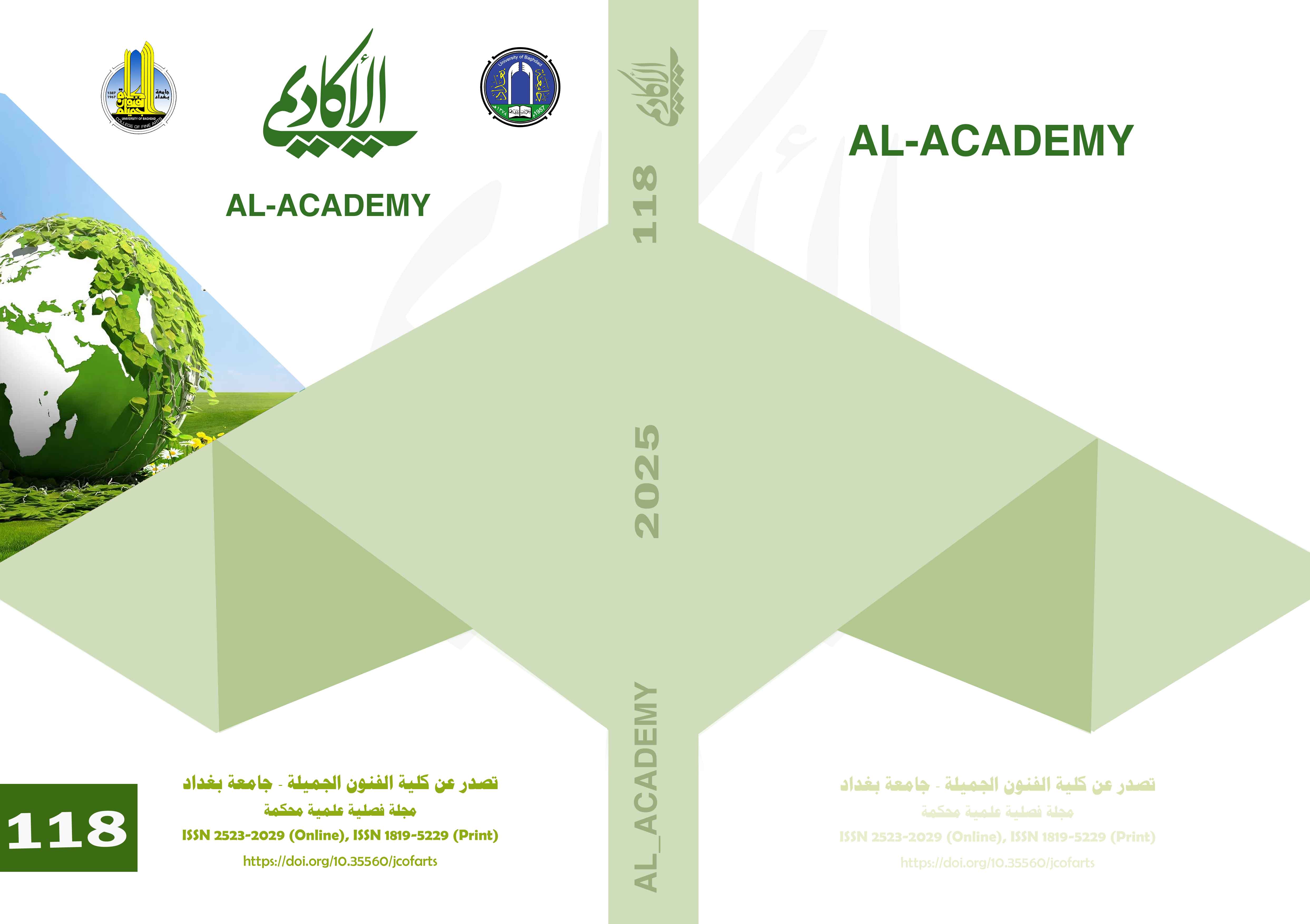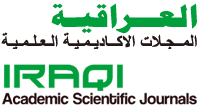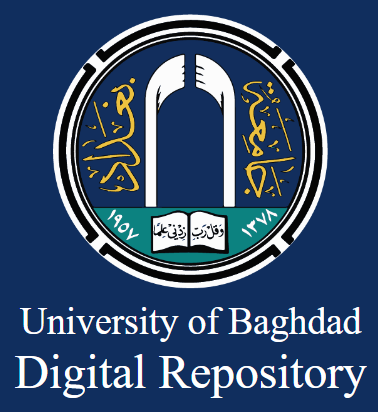The Potential of Artificial Intelligence in Creating Contemporary Paintings Inspired by Saudi Najdi Heritage
DOI:
https://doi.org/10.35560/jcofarts1653Keywords:
Artificial Intelligence, Visual Arts, Creativity, Contemporary, Najdi Heritage.Abstract
Amid the rapid technological advancements, artificial intelligence has emerged as one of the most prominent tools of the modern era, contributing to the expansion of artistic creativity. It has become an active partner in generating ideas and shaping aesthetic visions, while enabling artists to explore new methods and forms that transcend the limits of traditional tools.
This research seeks to explore the role of artificial intelligence technologies in developing creativity among contemporary visual artists while preserving the visual identity inspired by Najdi Saudi heritage. The study aims to identify the most significant uses of artificial intelligence in producing artworks, to reveal sources of inspiration from Najdi heritage, and to apply AI tools to paintings inspired by this heritage in order to create contemporary creative works.
The research adopts the descriptive-analytical method, with a sample consisting of five artworks produced by the researcher. The theoretical framework is structured around two main axes: applications of artificial intelligence in visual arts, and visual sources of inspiration from Najdi Saudi heritage.
The study concludes with several key findings, most notably: the diversity of AI applications in art, including text-to-image generation and style transfer; Najdi architecture, with its ornamental and chromatic elements, provides a rich source of visual inspiration; and AI-based processing of traditional ornamental elements has offered new interpretations without erasing their original identity. The artworks maintained their fundamental visual structure despite formal transformations, confirming the possibility of integrating artificial intelligence into contemporary art while preserving cultural heritage.
References
- Al-Areefi, T. M. (2023). Phenomenology as a method for perceiving the aesthetics of ugliness in contemporary art design. The Academic Journal, (110), 315–350.
- Abdel-Aziz, M. L. (2023, November 4–5). Artificial intelligence adjudication. In Conference of the Faculty of Law, Ain Shams University: Legal and Economic Challenges and Prospects of Artificial Intelligence, Egypt.
- Abdel-Hamid, S. (2018). The Creative Process in Painting. Egyptian Office for Publications.
- Abdul-Razzaq, G. (2024). The conceptual and technical foundations of artificial intelligence and its development: From computational models to machine learning. Arab Center for Research and Policy Studies.
- Amin, M. (2025, March 18). A study on tangible and intangible heritage. Athar Blog. https://www.2thar.com/2024/11/tangible-intangible-heritage.html
- Bahammam, A. S. O. (2000, April 1). Architectural and urban characteristics of traditional housing in the Kingdom of Saudi Arabia. First Scientific Conference “Earthen Architecture at the Gate of the 21st Century,” Hadhramout University, Yemen.
- Bajouri, S. (2023). Accelerated leaps: The future of generative artificial intelligence and its challenges. Trending Events, (35), 71–76.
- Colson, A., & Gross, E. (2024). The algorithmic art: Exploring the intersection of human imagination and AI technology. Ekphrasis, 2(2), 48–72. https://research-ebsco-com.sdl.idm.oclc.org/c/5v5h53/viewer/pdf/xd4dmojxq5
- Fadl, Y. M. (2021). The aesthetics of Saudi architectural heritage as a source of creativity in visual artworks: Diriyah as a model. King Faisal University Scientific Journal, 22(1), 163–173.
- Gan, I. S. (2016). The interactive relationship between visual heritage and creativity among artists in the Kingdom of Saudi Arabia. Research in Specific Education, (27), 68–105.
- Generative Art Guide. (n.d.). In AIArtists.org. https://aiartists.org/generative-art-design
- Al-Ghamdi, H. S., & Fayoumi, F. A. Q. (2023). Decorative data of architectural heritage in the Najd region for designing metal tourist souvenirs. Arab Journal of Social Sciences, (23) Part 1, 120–140.
- Ghoneim, M. A. F., & Al-Zahrani, A. N. A. (2017). Cultural heritage: Its essence, threats, and preservation. King Faisal Center for Research and Islamic Studies.
- Hassanein, M. E. (2020). The industrial design process in light of artificial intelligence. Journal of Architecture, Arts and Humanities (Special Issue), 628–643.
- Hassani, H., Silva, E. S., Unger, S., TajMazinani, M., & Mac Feely, S. (2020). Artificial Intelligence (AI) or Intelligence Augmentation (IA): What Is the Future? AI, 1(2), 143–155. https://doi.org/10.3390/ai1020008
- Heritage Commission. (2024). Publications of the Heritage Commission. Retrieved from https://heritage.moc.gov.sa/Publications/Commissions-Publications
- Al-Hindoom, A. A. (2024). Innovative impacts of artificial intelligence on the creative process and artistic identity in contemporary painting. Scientific Journal of Research in Arts and Qualitative Sciences, 2(21), 1–59.
- Jonathan A. Plucker, Ronald A. Beghetto, & Gayle T. Dow. (2004). Why Isn't Creativity More Important to Educational Psychologists? Educational Psychologist, 39(2), 83–96. https://doi.org/10.1207/s15326985ep3902_1
- Kirsch, J. (2023, July 2). Artificial Intelligence Invades the Artworld, Part (4): A New Creative Tool for Artists? https://www.julieelizabethkirsch.com/blog/tag/AI+art
- Lima, E. (2024). AI art and public literacy: The miseducation of Ai-Da the robot. AI Ethics, 4, 841–854. https://doi.org/10.1007/s43681-024-00488-5
- Marrone, R., Taddeo, V., & Hill, G. (2022). Creativity and Artificial Intelligence—A Student Perspective. Journal of Intelligence, 10(65), 1–11. https://www.proquest.com/docview/2716553229
- Ministry of Culture. (2023). Cultural Heritage Documentation and Digital Archiving Guide (2nd ed.). Ministry of Culture. file:///Users/ayshahalmosalam/Downloads/CulturalHeritageDocumentationandDigitalArchivingGuide1AR.pdf
- Al-Moammar, S. F. (2009). Ornamental systems in Najdi architecture as a source for designing decorative panels [Master’s thesis, King Abdulaziz University].
- Mousa, A., & Bilal, A. H. (2019). Artificial Intelligence: A revolution in contemporary technologies [E-book]. Arab Group for Training and Publishing.
- Nourallah, W. A. J. (2024). Linguistic correction using generative artificial intelligence applications (ChatGPT and its peers): A comparison and analysis. Journal of Arabic Language and Islamic Sciences, 3(12), 9–58.
- Al-Obailan, L. A. H., Al-Awad, A. A. A., Baltayeb, D. M. R., & Barfaha, S. K. H. (2022). Visual characteristics and various dimensions of decorations in the design of traditional Najdi houses. Saudi Journal of Art and Design, 2(1), 57–90.
- Salman, S. S. (2009, August 3–6). The role of heritage resources in achieving sustainable development and the role of NGOs in heritage management. In Contemporary Trends in Cultural Heritage Management [Symposium], Cairo. Arab Administrative Development Organization, 309–330.
- Sayyid, A. M. (2009, August 11–13). Cultural heritage in the Arab world: Methods of destruction and deterioration and means of preservation. In Preserving Cultural Heritage in the Arab World, Petra, Jordan. Arab Administrative Development Organization, 107–130.
- SDAIA. (2023). Generative Artificial Intelligence. Generative AI Series (1). Saudi Data and Artificial Intelligence Authority (SDAIA). https://sdaia.gov.sa/ar/MediaCenter/KnowledgeCenter/ResearchLibrary/Generative-AI.pdf
- SDAIA. (2024). Artificial Intelligence. AI for Executives Series (1). Saudi Data and Artificial Intelligence Authority (SDAIA). https://sdaia.gov.sa/ar/MediaCenter/KnowledgeCenter/ResearchLibrary/SDAIAPublications09.pdf
- SDAIA & King Salman Global Academy for Arabic Language. (2022). Data and Artificial Intelligence Dictionary, English–Arabic. https://sdaia.gov.sa/ar/MediaCenter/KnowledgeCenter/ResearchLibrary/SDAIAPublications15.pdf
- Shallal, F. A. (2023, May 3–4). The effectiveness of artificial intelligence in contemporary digital graphic design. 19th Scientific Conference, College of Fine Arts, University of Baghdad, Iraq.
- Al-Shammari, H. U. S. (2023). The experience of the Kingdom of Saudi Arabia in documenting World Heritage sites. Journal of Historical and Social Studies, (59), 191–232.
- Shchitova, A. A. (2020, December 7). Definition of Artificial Intelligence for Legal Regulation. In ISCDE 2020, Atlantis Press. https://www.atlantis-press.com/proceedings/iscde-20/125947856
- Shiekh, H., Prins, C., & Schrijvers, E. (2023). Mission AI: The New System Technology. [EBook]. Springer.
- Al-Sudairy, M. M. (2022). Formal and aesthetic values of horse painting styles in contemporary Saudi art. The Scientific Journal of INSEA - Education Through Art Association, 8(29), 243–277.
- Al-Sudairy, M. M. N. (2023). The aesthetics of employing heritage symbols derived from Najdi doors in Saudi fine art painting. The Academic Journal for Research and Scientific Publishing, (46), 315–352.
- Al-Sudairy, M. M., & Al-Barakat, M. S. A. (2024). Utilizing artificial intelligence technologies as a source for designing artworks inspired by contemporary Saudi art. Journal of Arts, Literature, Humanities and Social Sciences, (108), 223–240.
- Al-Suwaih, M. I. (2024). Traditional motifs in Najdi houses: The case of Sudair and Al-Washm regions. The Saudi Historical Society.
- Takagi, Y., & Nishimoto, S. (2023, June 18–22). High-resolution image reconstruction with latent diffusion models from human brain activity. CVPR 2023, Vancouver, Canada, 14453–14463. https://doi.org/10.1109/CVPR52729.2023.01389
- Wang, P. (2019). On Defining Artificial Intelligence. Journal of Artificial General Intelligence, 10(2), 1–37. https://sciendo.com/article/10.2478/jagi-2019-0002
- Youssef, T. H. (2018). Heritage as an approach to achieving personal identity in contemporary art. Journal of Architecture, Arts and Humanities, (10), 165–181.
Downloads
Published
Issue
Section
License
Copyright (c) 2025 Ayshah Ibrahim Mohammed Almosalam, Maha Mohammed Nasser Al-Sudairy

This work is licensed under a Creative Commons Attribution 4.0 International License.













